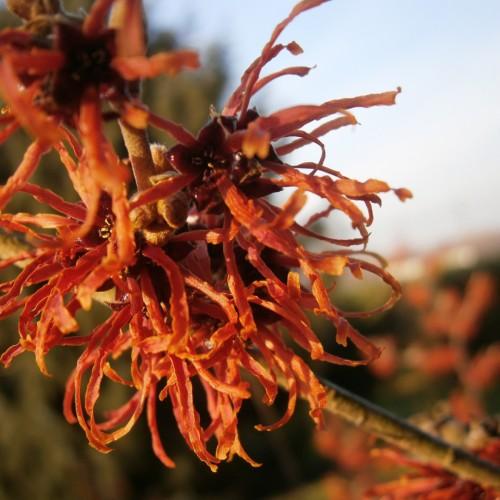
witch hazel
Hamamelis intermedia 'Fire Cracker'
Cycle:
Perennial
Watering:
Average
Hardiness Zone:
5 - 8
Flowers:
Flowers
Sun:
Full sun,part shade
Leaf:
Yes
Growth Rate:
Low
Maintenance:
Low
Drought Tolerant:
Yes
Care Level:
Medium
watering
Witch hazel (Hamamelis intermedia 'Fire Cracker') should be watered regularly but lightly. Aim to keep the soil between the plant and the container moist, but not soggy or overly wet. Water approximately once a week or when the surface of the soil begins to feel dry. Overwatering can cause root rot so the key is to find a balance. When watering, use tepid, not cold, runoff-free water, slowly adding enough until it begins to drip out of the drainage holes. During the hot summer months, witch hazel may require more frequent watering, every 3 to 4 days. During the winter, when the plant is dormant, you can reduce the amount of water, allowing the top of the soil to dry out between watering.
sunlight
Witch hazel is a hardy plant species that prefers full sun to partial shade. It typically needs at least 6 hours of direct sun during the growing season and is able to tolerate even more. When grown in full sun locations, the shrub produces the most vibrant and stunning fall colors. During the winter months, however, it should be protected from harsh sunlight, especially on warm days when the sun is at its strongest. For best results, place witch hazel in a location that receives some sunlight in the morning, but that is shaded by trees or buildings during the afternoon.
pruning
Witch hazel (Hamamelis intermedia 'Fire Cracker') should be pruned in late winter or early spring. Pruning should be minimal; simply trim away dead branches and any offshoots that are developing too close together, as well as any branches that are crossing or rubbing against other branches. This shrub is naturally dense and rounded and requires no shearing. Thin out the oldest and thickest stems by a third if desired, but avoid over pruning.
